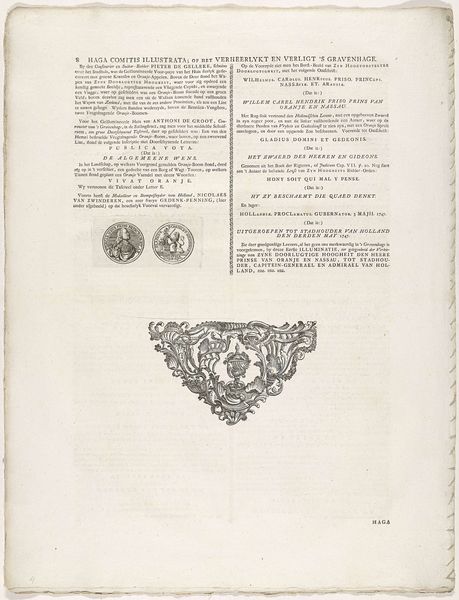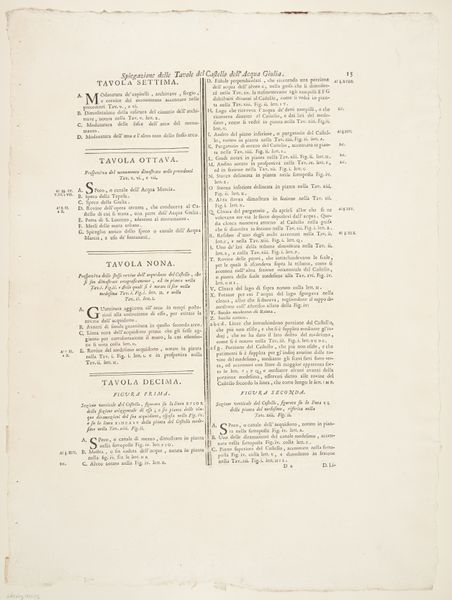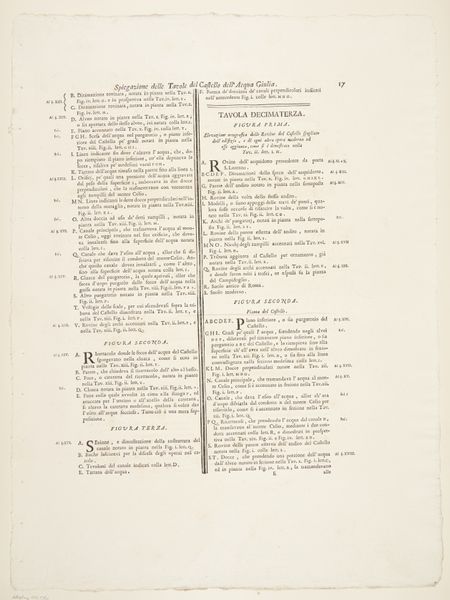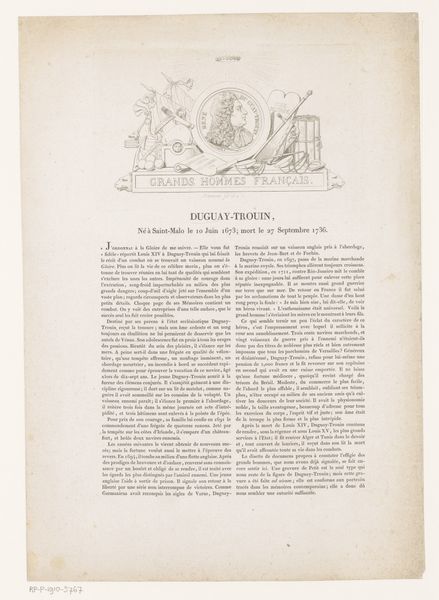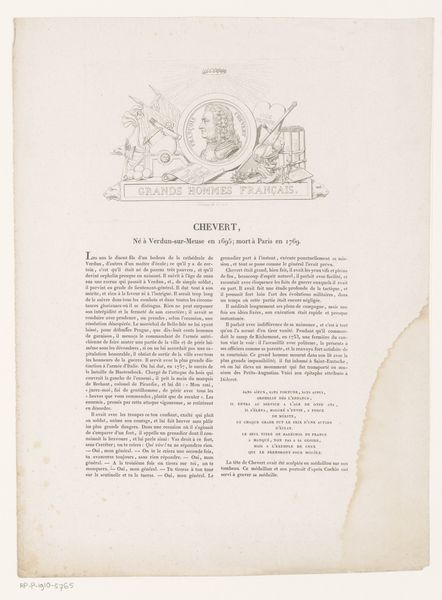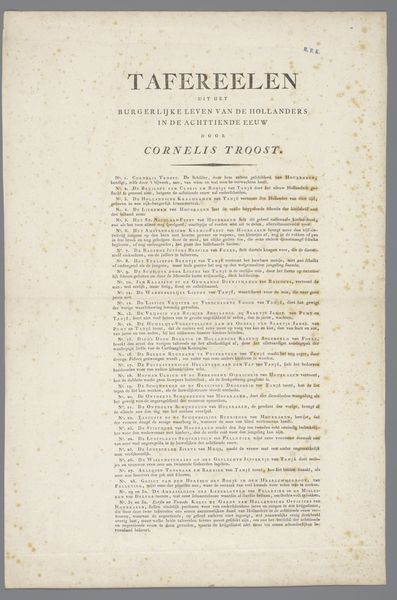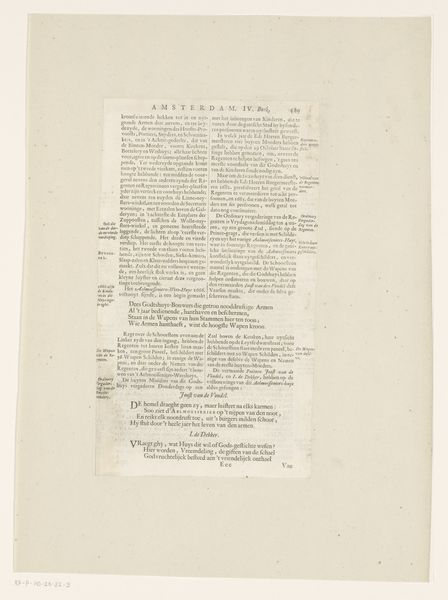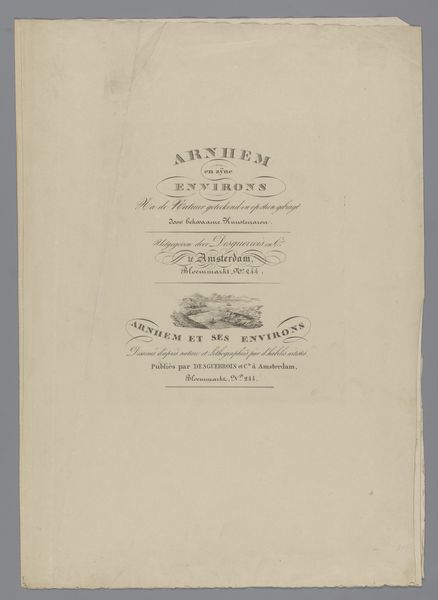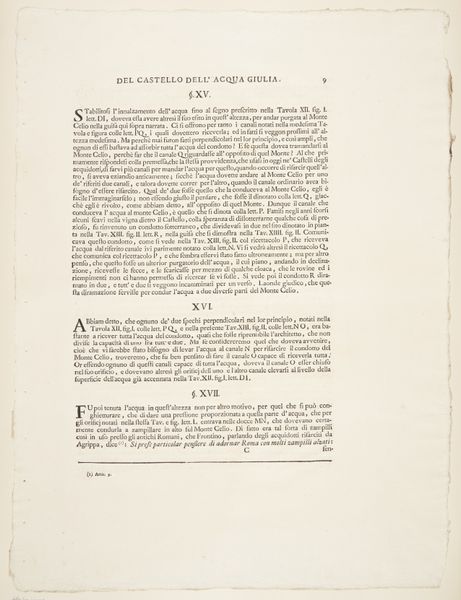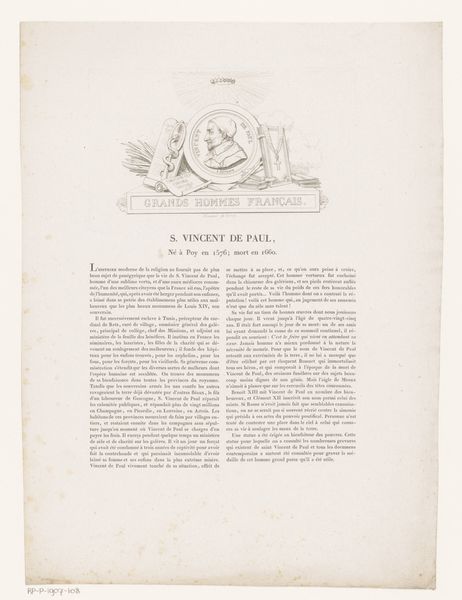
A specification of the plates of the fountainhouse of Acqua a Giulia. Text sheet with vignette 1761
0:00
0:00
Dimensions: 593 mm (height) x 445 mm (width) (bladmaal), 98 mm (height) x 148 mm (width) (plademaal)
Editor: Here we have "A Specification of the Plates of the Fountainhouse of Acqua Giulia," a print by Giovanni Battista Piranesi from 1761. It’s… text. Mostly. There’s a small, detailed vignette at the bottom. It seems incredibly bureaucratic, yet there's a beautiful formality to the layout. What am I missing here? What's the significance of this seemingly dry document? Curator: Think about Rome in the 18th century. Water, or the control of it, was power. This print isn't just a neutral description; it’s a public document, staking claims and asserting authority. Editor: So, it’s propaganda? Curator: In a way, yes. Piranesi was deeply invested in portraying Rome’s architectural heritage, but he was also highlighting the ongoing efforts to maintain and improve the city’s infrastructure. Consider how this print would have been disseminated. Where would people have seen it? Editor: Maybe posted publicly, to inform people about the Aqua Giulia's operations? And reassure them that the water supply was well-managed? Curator: Precisely. The “Imprimatur” stamps legitimize the information. Even the font choice conveys authority. The vignette, though small, reinforces the connection to the physical infrastructure—a visual reminder of the fountainhouse. The plates reference provides another dimension of the project; the actual blueprints or artist's renditions of the plans. How does understanding its intended audience change your initial impression? Editor: It feels less dry now, more like a carefully crafted statement of civic pride and administrative competence. It’s fascinating how a seemingly mundane document can be so revealing of social and political power dynamics. Curator: Exactly. And that's the power of art, even in its most functional forms. Now consider what that reveals about Baroque art. Editor: Right. Thanks! That completely reframed my understanding.
Comments
No comments
Be the first to comment and join the conversation on the ultimate creative platform.
